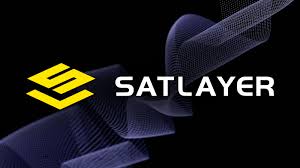The Bitcoin ecosystem is getting a major upgrade with SatLayer, a groundbreaking restaking platform built on the Babylon protocol, which just opened its airdrop registration in late 2024. This move is turning heads in the crypto world, offering Bitcoin holders a chance to earn rewards by restaking their BTC and liquid staking tokens (LSTs) to secure decentralized applications (dApps) and networks. Backed by an $8 million pre-seed funding round, SatLayer is poised to redefine how Bitcoin integrates with DeFi, making BTC a productive asset rather than a passive store of value. Let’s explore what SatLayer’s airdrop means, how to participate, and why this platform could be a game-changer for Bitcoin’s role in decentralized finance.
Unlocking Bitcoin’s Potential with Restaking
Bitcoin has long been seen as digital gold—great for holding, but not so much for generating yield. SatLayer changes that narrative by introducing restaking, a process that lets users stake their BTC or LSTs to secure Bitcoin Validated Services (BVSs), like dApps, layer-2 chains, oracles, and data availability layers. Built on Babylon, a Bitcoin staking protocol, SatLayer enables users to earn rewards while keeping their assets self-custodied, without wrapping or bridging to other networks. This is a big deal because it brings Bitcoin into the DeFi fold, allowing holders to maximize returns without sacrificing security.
The platform’s architecture is designed for flexibility. Developers can integrate BVSs with customizable slashing mechanisms, meaning malicious activity can result in penalties that either fund the protocol or burn tokens. This innovation, as noted by SatLayer’s co-founder Luke Xie, makes it the first dedicated Bitcoin restaking platform, distinct from Ethereum-based competitors like Symbiotic, which uses wrapped BTC. With backing from heavyweights like Hack VC, Castle Island Ventures, and Franklin Templeton, SatLayer’s $8 million raise in August 2024 signals strong industry confidence in its vision.
The Airdrop Buzz: What’s on Offer?
SatLayer’s airdrop registration, announced in November 2024, is generating excitement as a way to reward early adopters and boost community engagement. Airdrops are a classic crypto strategy to distribute tokens, incentivize participation, and spread awareness. While specific details on the token allocation and eligibility are still unfolding, SatLayer’s official site indicates that users who deposit BTC or LSTs into its vaults on Babylon Genesis can qualify for rewards. The airdrop is likely tied to participation in restaking activities, aligning with SatLayer’s mission to enhance Bitcoin’s utility in DeFi.
The potential for airdrop rewards is particularly enticing given Bitcoin’s massive $2 trillion market cap and the growing interest in BTCfi (Bitcoin finance). By joining the airdrop, users can not only earn tokens but also support cutting-edge projects like BIMA’s Bitcoin-backed stablecoin or Birdlayer’s trading platform on Arbitrum Orbit. This positions SatLayer as a hub for next-gen blockchain apps, all secured by Bitcoin’s unmatched finality.
Step-by-Step Guide to Joining SatLayer’s Airdrop
Ready to jump in? Here’s a straightforward guide to registering for SatLayer’s airdrop, based on available information:
- Visit the Official Platform: Head to https://app.satlayer.xyz/ and review the Terms of Use. Ensure you’re using the official site to avoid phishing scams.
- Set Up a Compatible Wallet: You’ll need a wallet that supports Bitcoin or LSTs, such as those compatible with Babylon Chain. Popular options include non-custodial wallets like Trust Wallet or hardware wallets for added security.
- Deposit BTC or LSTs: Navigate to the “Deposit” section on SatLayer’s app. You can deposit native BTC or LSTs from platforms like Solv Protocol, Lombard, Bedrock, pStake, or PumpBTC. These tokens will be used to secure BVSs and earn rewards.
- Register for the Airdrop: Look for the airdrop registration form on SatLayer’s platform or social channels (like X). You may need to provide wallet details or complete tasks, such as staking a minimum amount or joining their community.
- Stake and Earn: Once registered, deposit your assets into SatLayer’s vaults on Babylon Genesis. This activates restaking, allowing you to earn yield and potentially qualify for airdrop tokens.
- Stay Updated: Follow SatLayer’s official X account or blog for updates on eligibility, deadlines, and token distribution. Airdrop details may evolve, so keep an eye out for announcements.
Note: Always verify links and ensure compliance with local regulations. SatLayer emphasizes user responsibility for legal and financial compliance, as outlined in their Terms of Use.
Why SatLayer Matters for Bitcoin’s Future
SatLayer’s airdrop isn’t just about free tokens—it’s a signal of Bitcoin’s evolving role in DeFi. By enabling restaking, SatLayer unlocks Bitcoin’s liquidity for dApps, bridges, and exchanges, creating new revenue streams for holders. The platform’s integration with Sui, announced in December 2024, further amplifies its reach, allowing developers to tap into Bitcoin’s security for projects like Navi, Suilend, and Cetus. This collaboration highlights SatLayer’s ambition to make Bitcoin a cornerstone of cross-chain DeFi ecosystems.
The $8 million pre-seed round, oversubscribed within a month, underscores the market’s belief in SatLayer’s potential. Investors like OKX Ventures and Mirana Ventures see it as a bridge between Bitcoin’s $2 trillion market and the fast-growing DeFi sector. As Luke Xie told The Block, the platform’s focus on native Bitcoin restaking—without reliance on Ethereum’s architecture—sets it apart, offering a purer, more secure approach to BTCfi.
Potential Hurdles and Considerations
Like any new venture, SatLayer faces challenges. Restaking introduces risks like slashing, where assets are penalized for validator misbehavior. While SatLayer’s flexible slashing mechanism is innovative, it’s untested at scale. Regulatory scrutiny could also pose issues, as restaking platforms navigate complex financial laws. Users must ensure compliance with anti-money laundering and other regulations, as SatLayer’s Terms of Use make clear.
Additionally, the airdrop’s success depends on clear communication and fair distribution. If eligibility criteria are too restrictive or rewards underwhelm, community enthusiasm could wane. However, SatLayer’s backing and technical prowess—bolstered by MIT and Stanford alumni—suggest it’s well-equipped to address these hurdles.
The Bigger Picture: Bitcoin’s DeFi Renaissance
SatLayer’s airdrop is a gateway to a broader transformation. By making Bitcoin programmable, the platform empowers holders to do more than HODL, opening doors to sustainable yields through DeFi, RWAs, and institutional adoption. As Bitcoin’s ecosystem grows, with protocols like Babylon and partners like Lombard Finance, SatLayer is at the forefront of a BTCfi revolution. The airdrop is a chance for early adopters to get in on the ground floor, supporting a project that could redefine Bitcoin’s utility.
For crypto enthusiasts, this is an exciting moment. Whether you’re a Bitcoin maximalist or a DeFi explorer, SatLayer’s airdrop offers a shot at rewards and a front-row seat to Bitcoin’s next chapter. Head to their platform, stake your BTC, and join the movement—Bitcoin is no longer just digital gold; it’s a yield-generating powerhouse.
Sources:
- Bitcoin Restaking Platform SatLayer Raises $8 Million in Pre-Seed Funding. The Block, August 22, 2024.
- BTC Re-Staking Platform SatLayer Secures $8M in Pre-Seed Funding. Crypto.news, August 22, 2024.
- SatLayer | The New Economy, Built on Bitcoin. SatLayer.xyz, 2024.
- SatLayer Bitcoin Restaking Integration Set to Ignite BTCfi. Blog.sui.io, December 18, 2024.
- SatLayer Airdrop 2025. AirdropBee, November 29, 2024.
- Top 5 Restaking Protocols to Watch As We Head Into 2025. Bitget News, December 31, 2024.



























